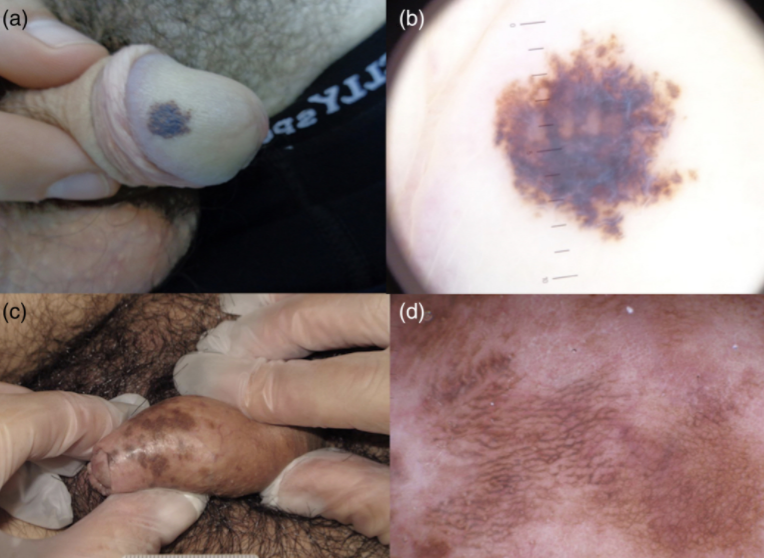Melanosis vs. Melanoma
Melanosis is a skin condition of abnormal or excessive accumulation of pigment in the skin.
Genital melanosis is just when this condition occurs in the genital area of a male or female, usually around the vulva and the upper part of the penis.
Genital melanosis can be noncancerous or cancerous (malignant), however, in most cases, genital melanosis is a benign condition, that is, it’s caused by an overproduction of pigment in the skin cells and non-cancerous.
Benign melanosis often occurs in people with darker skin and it’s not usually a threat.
Melanoma is a skin cancer caused by the excessive growth of the cells that produce pigment in the skin.
Melanoma can occur in all parts of the human body, hurt, and spread easily to other parts of the body if it’s not treated in the early stage.
The difference between melanosis and melanoma is that the former is caused by noncancerous cells that produce excessive pigment in the skin, while melanoma is caused by cancerous cells that produce excessive pigment in the skin.
Therefore, malignant melanosis can also be referred to as melanoma, so in some cases, melanosis and melanoma can be used interchangeably but they are not the same in other cases.
Symptoms of Penile Melanosis and Melanoma
Penile melanosis is a condition in which there are dark or blackish spots on the skin of the penis that may be present at birth or may develop later in life.
Melanoma, on the other hand, is a type of skin cancer that can affect the penis.
The main symptom is discoloration and patches on the penile skin. In the initial stage, it’s difficult to note any symptoms besides the discoloration, therefore, you should consult your doctor if you notice any unusual spots or changes.
Your doctor would be able to determine whether the changes are due to penile melanosis or something more serious, such as melanoma.
The main symptom of melanoma is the presence of a dark or unusual-looking mole or patch on the skin of the penis.
Also, a change in the size, shape, or color of a mole or patch on the penis, a patch that’s itchy, painful, crusty, or bleeding.
Regular self-examination of your skin can also help to identify any new or changing moles that may be cancerous.
If you are concerned about any changes in the appearance of your genital skin, it is important to consult your dermatologist.
He will be able to examine the skin around the genital area or any area it’s affected, determine the possible causes, and offer the necessary treatment.
Penile Melanosis and Melanoma Treatment
Penile Melanosis Treatment
If you notice any of these signs and symptoms, it is important to go for a medical examination quickly.
Benign genital melanosis does not usually require any treatment since it can go away once the excessive pigments are normalized.
However, penile melanosis treatment involves using ointment and skin lightening cream to lighten the skin in the initial stage and remove the affected skin in the advanced stage.
The affected skin can be removed by cryotherapy (freezing the affected skin with liquid nitrogen), laser therapy, and surgery.
The specific treatment recommended will depend on the size and location of the affected skin and the preferences of the individual.
Penile Melanoma Treatment
Penile melanoma treatment is a bit more complex since it may involve surgery to remove the melanoma and some healthy tissue around the site.
Penile melanoma or other forms of melanoma can also be treated with radiation therapy or chemotherapy to kill the cancer cells.
Some other forms of therapies to block the growth and spread of cancerous cells and Immunotherapy to boost the body’s immune system to fight cancer cells can also be adopted.
The kind of treatment suitable will depend on the site of the melanoma, the stage, and the overall health of the patient.
It is important to consult with a doctor for a proper diagnosis and treatment plan as early diagnosis and treatment of melanoma can improve the chances of a successful outcome.
